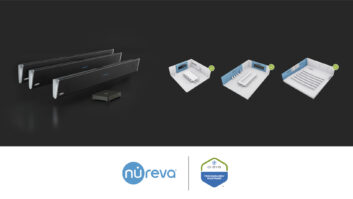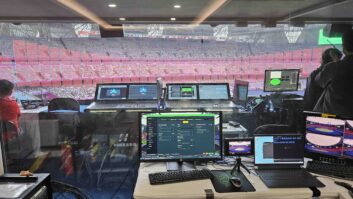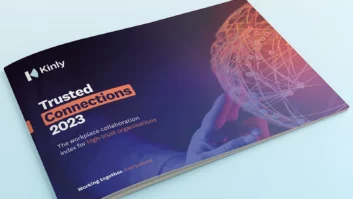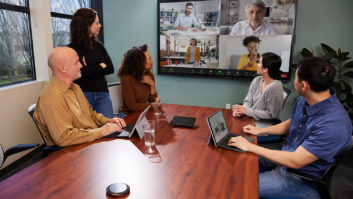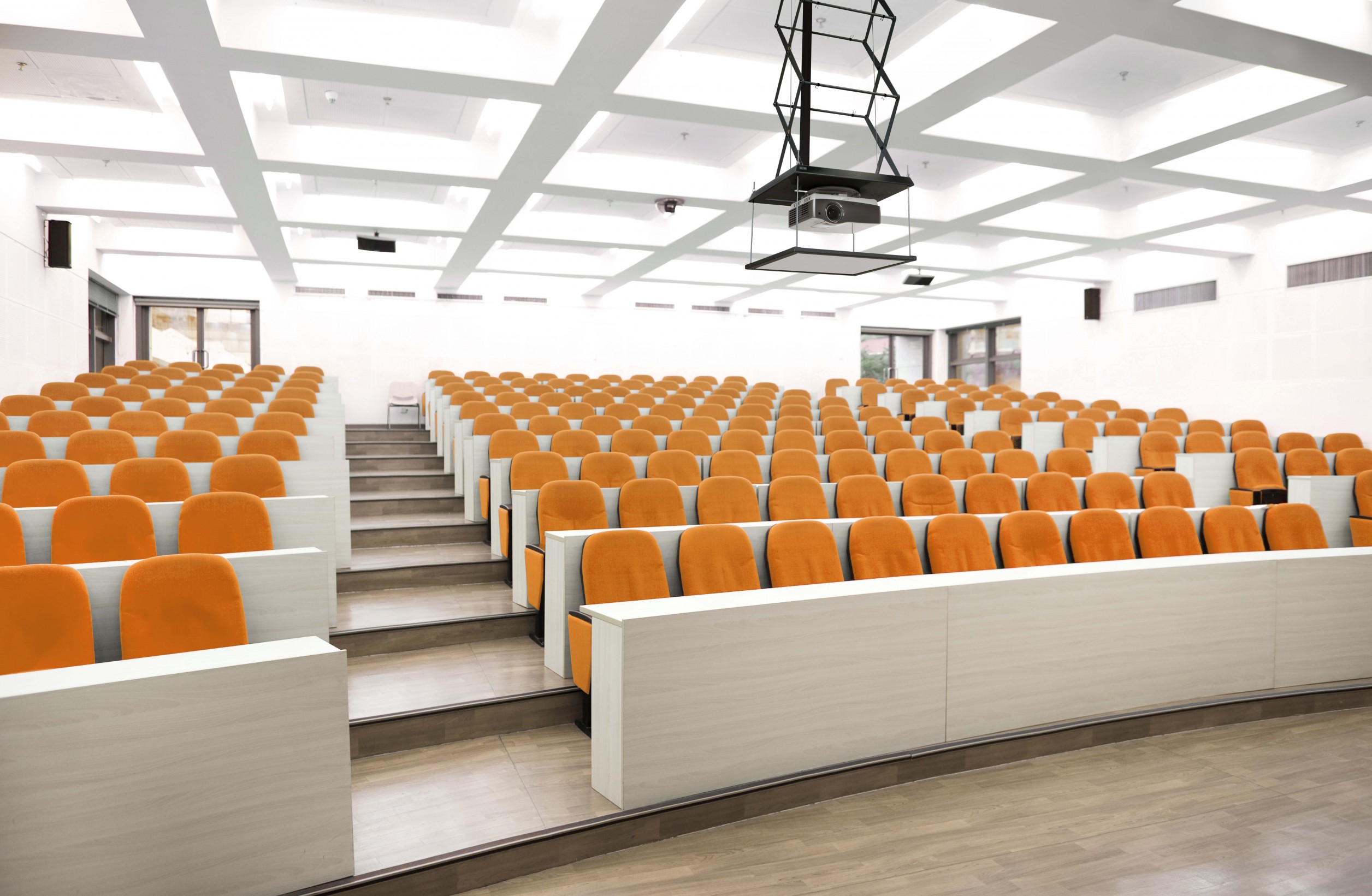
Having previously revealed how manufacturers are balancing performance and aesthetics, here Steve Montgomery looks at the impact collaboration is having on different forms of discreet technology.
While speakers are the largest and most obvious area of application, other forms of technology are receiving the same treatment. The wider use of flatpanel displays, projectors and videoconferencing, combined with the newer trend for multipurpose meeting and huddle rooms has driven demand. Wireless internet, Bluetooth device connectivity and mobile device sharing apps have contributed greatly to the removal of wiring and associated connector panels; as has the integration of remote control and data connectivity that is being built into commercial display devices such as projectors and interactive screens.
Retractable and foldable in-table monitors enable on-demand video and audio conferencing in boardrooms and meeting rooms and can be stowed out of sight to maintain the clean lines of stylised tables and furniture when not needed. “The old method of using an array of table-mounted microphones is giving way to discreet ceiling- or wall-mounted microphone arrays that can use beam-forming technology to automatically pick out individual voices. The advent of powerful DSP technology has enabled a previously unobtainable price/performance to be reached,” points out David Webster, chief technology officer at RGB Communications.
“The AV integrator has a huge part to play in inspiring the end user, matching requirements to budgets to develop the best possible result,” says Audipack marketing manager Bart Altewischer. “The best solutions are a result of good collaboration between AV integrators and equipment manufacturers. For example, screen and projector lifts and tailor-made furniture hide equipment when not in use. Development of these mechanisms is through the combination of end-user requirements, ease of installation and a match with the equipment itself.”
Many auditoriums and conference facilities are designed and equipped for a variety of applications, each requiring a separate set of AV equipment. Vogel’s is experiencing extensive growth in motorised projector lifts for multipurpose venues, as Leon Grooten, product manager for Vogel’s Professional explains: “Large projectors can be installed in a wide range of locations where they are needed for occasional use, such as ballrooms in hotels and conference centres, as well as boardrooms and corporate presentation suites, and retracted into the ceiling to preserve the beauty and style of the room when used for other events.”
Some application sectors, notably large historic buildings like ancient churches and cathedrals are highly resistant to completely invisible treatments. Many of these buildings have very little wood panelling, soft furnishing or suspended ceilings in which to conceal loudspeakers and other equipment. In these cases the best that AV integrators can do is select the smallest types of devices that are able to provide sufficient coverage – and where possible choose a finish that blends in with the surroundings. Loudspeaker array technology is providing benefits, and projectors are falling in size and footprint while increasing in luminosity.
“In-wall speakers are not a viable option in many old buildings constructed of stone and concrete, nor are flown speakers due to the height and building structure,” says Tom Beck, managing director of Alcons Audio. “Not only are they virtually impossible to install, but the quantity and associated delay circuitry required in highly reflective spaces make them uneconomic and highly obtrusive. Instead, active line-source array columns are an ideal solution. They are tall, thin and powerful and can be mounted unobtrusively on pillars and the sound beam can steered to head level, which keeps it away from the floor thus limiting reflections and distortion.”
Technology to conceal and hide AV equipment has developed greatly over the past few years, providing opportunities for integrators to excel. Benefits to users and the appreciation of architects and interior designers is well received. However, as Steve Olszewski, vice president, Stealth Acoustics comments: “There is a lot of growth yet to be made in the mainstreaming of quality hidden technologies in the professional and commercial AV spaces.”
Alcons Audio
Audipack mounting products
RGB Communications AV distribution
Stealth Acoustics invisible speakers
Vogel’s mounting solutions



